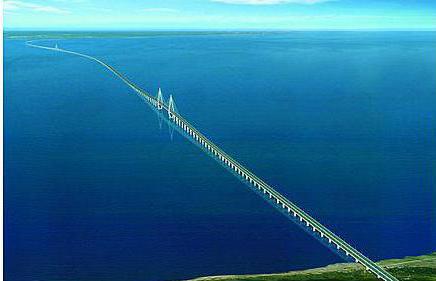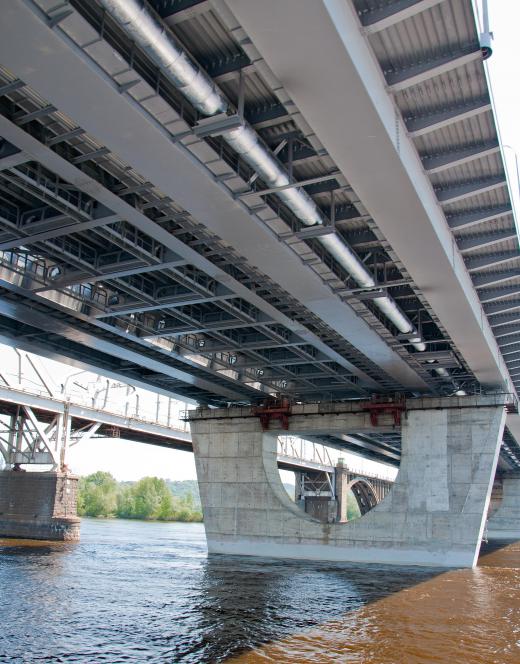What is a Beam Bridge?
A beam bridge, sometimes called a girder bridge, is a rigid structure that consists of one horizontal beam supported at each end, usually by some kind of pillar or pier. In structural terms, it is the simplest type of bridge and is a popular selection because of its inexpensive construction costs. It began as a felled log supported by opposing river banks that was used to span a river or other body of water. Today, it is commonly made from reinforced concrete or steel beams for everything from pedestrian bridges to highway overpasses.
This type of bridge works on the principles of compression and tension, so a strong beam is needed to resist twisting and bending under the weight it must support. When a load — like a group of traveling cars — pushes down on the beam, the weight of the beam pushes down on the piers. The beam's top edge is pushed together as the result of compression, and tension causes the bottom edge to stretch and lengthen. This works in the same way that a wooden plank supported by blocks on each end can only hold a certain amount of weight before it buckles. The top reaches maximum compression, and the bottom snaps under too much tension.

Many beam bridges used in road construction are made from concrete and steel because these materials are strong enough to withstand the forces of compression and tension. The distance a beam can span is directly related to its height, because higher beams offer more material to dissipate tension. To create taller beams, trusses may be added for reinforcement. A truss is a construction of lattice work that supports a beam, creating rigidity and increasing the beam’s ability to dissipate the compression and tension. This technique only works to a certain degree, because eventually the weight of the bridge and trusses will be too heavy to be supported.

In spite of reinforcements like concrete, steel, and trusses, the biggest limitation of this type of bridge is still its length, so they rarely span more than 250 feet (76.2 m). Longer distances can be reached by daisy-chaining bridge sections together to create a continuous span. One of the world's longest bridges is a continuous span beam bridge that was created this way. Located in Louisiana, the Lake Pontchartrain Causeway is a pair of parallel bridges that measure almost 24 miles (38.5 km) long and are supported by 9,500 concrete pilings.
AS FEATURED ON:
AS FEATURED ON:













Discussion Comments
@Markus: Hot glue guns work better.
I found several toothpick bridge building websites that offer tips on how to do that. Some even had photos of the finished project. You might find a YouTube video to give you some ideas too. Hope this helps. Good luck.
Anybody have some tips on building a toothpick beam bridge? I have to help my son with his science project. Does a hot glue gun work better than the white glue?
It's not unusual to think prehistoric man created the first wooden beam bridge. But not from their expert engineering, it was from natures fallen forces. The first known man-made concrete beam bridge was constructed by the Romans across the Tiber River in 620 B.C.
Post your comments